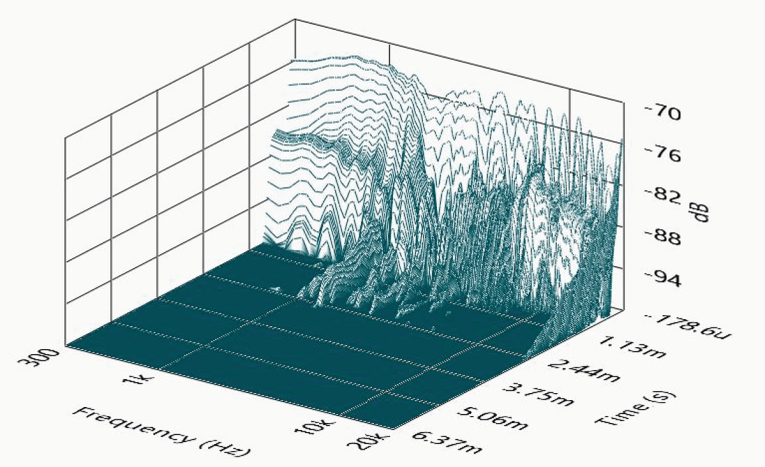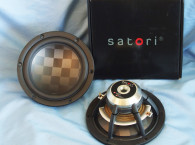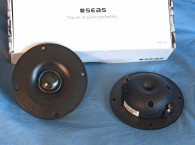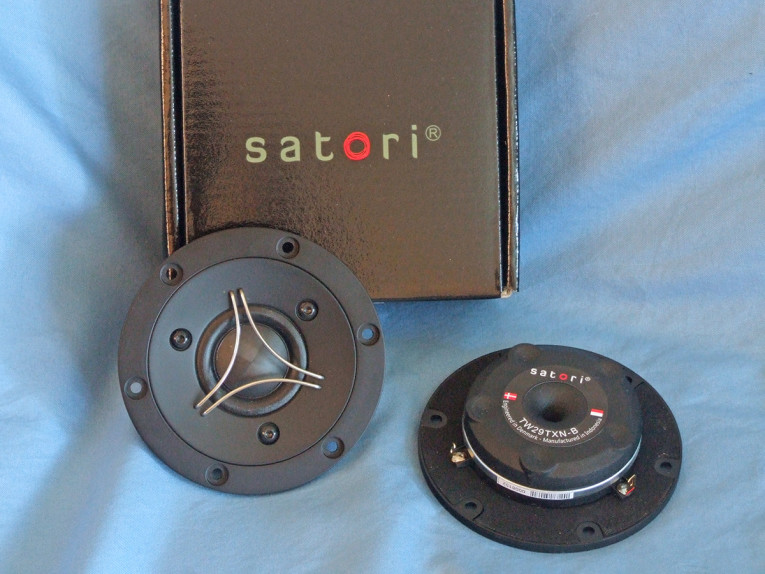

What makes this tweeter so special is that it has a new TeXtreme diaphragm (see Photo 2). I characterized the new Eminence N314X in the May 2020 issue of Voice Coil, and it was the first compression driver in the industry to use a TeXtreme diaphragm. Likewise, the Satori TW29TXN-B-4 is the first home audio tweeter I have examined that uses a TeXtreme diaphragm.
TeXtreme thin-ply carbon is a novel type of material that is used in applications that require a high degree of stiffness performance in combination with being ultra-lightweight. Examples include cryogenic tanks for space applications, next generation of commercial aircraft and Formula One race cars. By optimizing the way the thin-ply carbon layers are organized, mechanical performance can be maximized, weight minimized, and the part can be engineered to behave in certain desired ways in different areas and different directions.
By optimizing the fiber architecture, the symmetric breakup modes are replaced with more but smaller and local breakup modes. This creates a distributed breakup with smaller peaks in the frequency response and ultimately a smoother and more natural sound without harshness. Due to the ultra-lightweight and very high stiffness, TeXtreme thin-ply carbon technology is obviously a great material for high-frequency diaphragms for tweeters and compression drivers.
Features include a 29 mm TeXtreme-type diaphragm with a 8 mm wide surround, a non-reflective cast-aluminum rear cavity, a two-part aluminum faceplate with integrated mechanical decoupling, dual-balanced compression chambers, a high-saturation neodymium ring-type motor magnet with a T-shaped pole and dual copper shorting rings (Faraday shields), a copper-clad aluminum wire (CCAW) voice coil, a foam mounting gasket, silver tinsel leads, and gold-plated terminals.
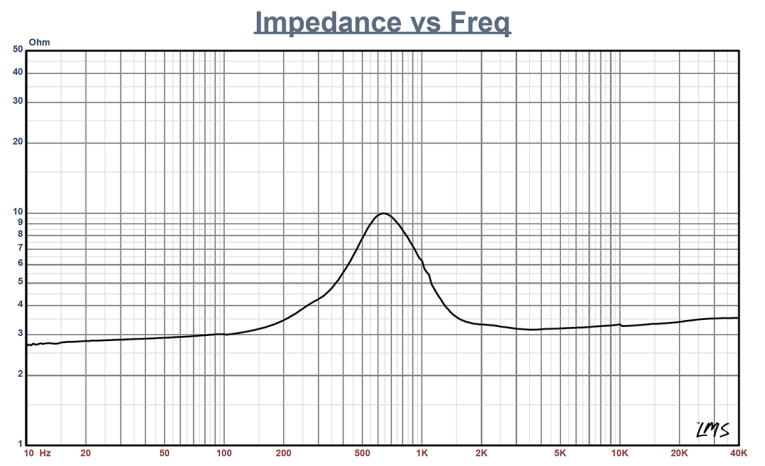


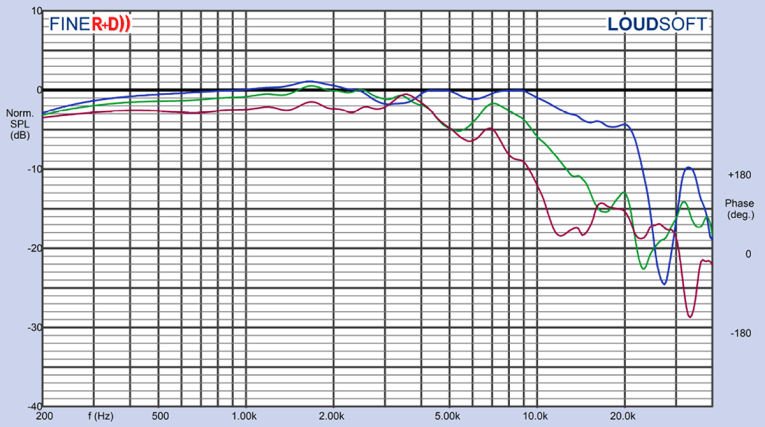
Testing commenced using the LinearX LMS analyzer to produce the 300-point impedance sweep illustrated in Figure 1. The tweeter’s resonance occurs at a moderately low 641 Hz. With a 2.94 Ω DCR (Re), the minimum impedance for this tweeter is 3.15 Ω at 3.58 kHz.
Following the impedance test, I recess mounted the TW29TXN-B-4 in an enclosure with a baffle area of 17” × 8” and measured the on- and off-axis frequency response using the LoudSoft FINE R+D analyzer (provided by LoudSoft) and the GRAS 46BE 1/4” microphone (courtesy of GRAS Sound & Vibration). I set them up to measure the 200 Hz to 40 kHz frequency response (using a 192 kHz sampling rate) at 2 V/0.5 m normalized to 2.83 V/1 m. Sweeps were performed at 0°, 15°, 30°, and 45°.
Figure 2 shows the TW29TXN-B-4’s on-axis response, which measured ±2 dB from 750 Hz to 20 kHz, followed by a decibel rise between 20 kHz to 40 kHz. Figure 3 gives the TW29TXN-B-4’s on- and off-axis response. Figure 4 shows the off-axis curves normalized to the on-axis response. Figure 5 shows the CLIO 180° polar plot (measured in 10° increments with 1/3 octave smoothing). Figure 6 shows the TW29TXN-B-4’s two-sample SPL comparison, indicating the two samples were closely matched to within 0.25 to 0.75 dB throughout its operating range.
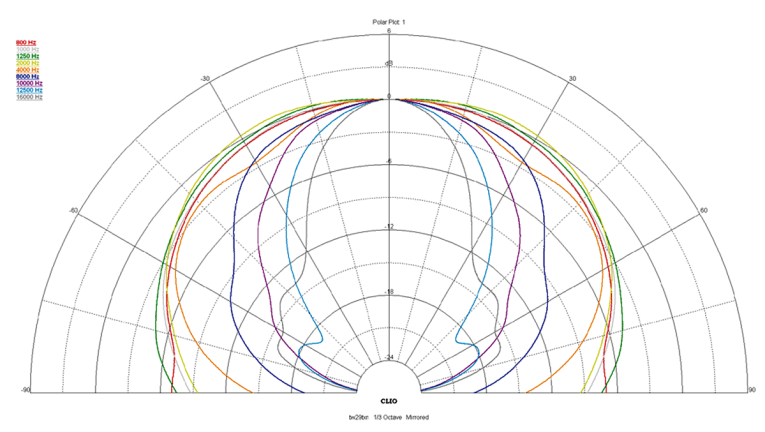

For the final test group of tests, I fired up the Listen, Inc. SoundCheck analyzer along with the Listen SCM 2 1/4" microphone (provided courtesy of Listen, Inc.) and measured the impulse response with the tweeter recess mounted on the same 17” × 8” test baffle. Importing this data into the Listen SoundMap software produced the cumulative spectral decay (CSD) waterfall plot shown in Figure 7. Figure 8 shows the Short-Time Fourier Transform (STFT) displayed as a surface plot. For the SoundCheck final test procedure, I set the 1 m SPL to 94 dB (2.59 V) using a noise stimulus, and measured the second- and third-harmonic distortion at 10 cm, depicted in Figure 9.
The build quality of the Satori line is definitely appropriate for the high-end two-channel market. I know that Danesian Audio (Frank Nielson and Ulrik Schmidt) listen obsessively to various iterations of a driver as they go through the development process, so I have no doubt that this tweeter performs admirably. As far as the Textreme diaphragm goes, so far it seems to be a less costly substitute for beryllium. I have done informal subjective comparisons of the TW29TXN-B-4 to a very good sounding aluminum diaphragm, and the TeXtreme diaphragm sounded very detailed with more high-frequency content. And comparing the TW29TXN-B-4 to a high-end beryllium dome tweeter, I thought that in terms of detail and definition, TeXtreme is very close, with the beryllium sounding a bit "warmer" and the TeXtreme a bit more forward. For more information about the SB Satori TW29TXN-B-4 and other SB Acoustics drivers, visit www.sbacoustics.com. VC
This article was originally published in Voice Coil, September 2020.
